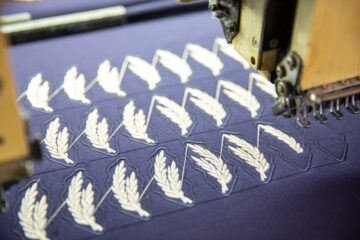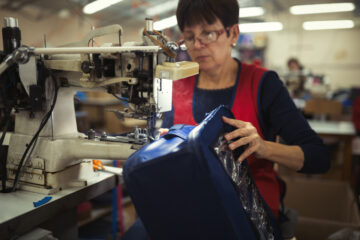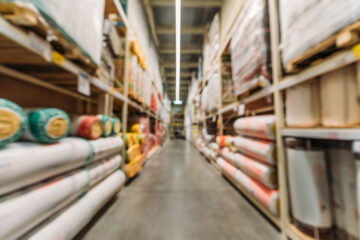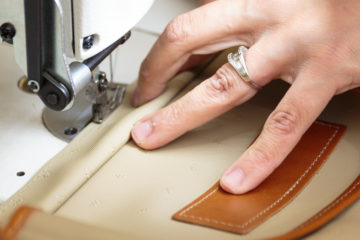Innovations in Nylon Bag Manufacturing Techniques
With a $22.8 billion market share, nylon bags have become indispensable to our modern lives and economy. Nylon bags are functional and durable, making them the perfect everyday accessory. As the demand for nylon bags grows, manufacturers constantly explore innovative methods to improve the efficiency of their production processes and enhance product quality. This article explains the latest innovations in nylon bag manufacturing that make these bags more durable, efficient, and sustainable.
Traditional Nylon Bag Manufacturing Techniques
Nylon was invented in 1939 as the world’s first wholly synthetic material. Traditional nylon manufacturing techniques have stayed similar since 1939, and nylon bag manufacturing has changed even less.
This manufacturing process involves large-scale machinery preparing, cutting, shaping, sewing, and finishing the fabric. The production process begins with fabric preparation, often including dyeing, coating, and laminating the material to achieve the desired color, texture, malleability, and functionality. Then, an automated cutting machine cuts the fabric using the programmed pattern. Next, the material is stitched together with strong thread to improve durability. Finally, the bags go through finishing processes such as trimming excess threads, adding labels, and quality checks before being packaged for distribution.
Limitations and Concerns
Though traditional nylon bag manufacturing techniques have worked well over the years, they have limitations. One issue is the need for more flexibility. These processes are designed for mass production and may make accommodating small orders with unique designs challenging.
Additionally, traditional nylon bag manufacturing techniques have faced criticism due to their environmental impact. Using chemical treatments, synthetic materials, and energy-intensive processes contributes to carbon emissions, pollution, and waste. The nylon bag manufacturing industry recognizes these concerns and actively seeks more sustainable and innovative methods to produce these staple bags.
Innovations in Nylon Bag Manufacturing Techniques
The nylon bag manufacturing industry has recently witnessed innovations that have revolutionized production and design processes. These new methods include advancements in materials and technologies, all of which make it easier for manufacturers to overcome the limitations of conventional production techniques.
One innovation is the inclusion of automated cutting and sewing machines. One can program these machines with the exact specifications for the bag, and the machine will take care of the rest.
Manufacturers now utilize advanced nylon fabrics with enhanced strength, abrasion resistance, durability, and sustainability. These fabrics are often derived from renewable alternatives like plants or recycled materials to reduce our reliance on petroleum, decrease carbon emissions, and reduce waste in the production process. Additionally, nanotechnology has played a significant role in improving the performance of nylon bags. Nano-coatings and treatments are often applied to improve water resistance, stain resistance, UV protection, and the overall longevity and durability of the bag.
The production of nylon bags is traditionally energy-intensive, with over 663kg of water consumed by producing 1kg of nylon. New production techniques have emerged by incorporating sustainable, renewable resources, like wind and solar energy, into the process. These processes are more energy efficient and can offer more flexibility than traditional methods.
Advantages of Innovative Techniques
There are many advantages to these innovative techniques, including the following.
1. Enhanced Durability and Strength
Introducing high-performance nylon has increased the durability and strength of nylon bags, thus allowing for a more reliable product.
2. Increased Customization Options
New manufacturing techniques allow for greater customization options, including pockets and compartments.
3. Improved Efficiency and Cost-Effectiveness
Automated cutting and sewing machines have reduced the time and manpower required to make nylon bags. These machines are capable of handling a multitude of sizes, stitch types, and customizations.
4. Reduced Environmental Impact
One significant advantage of innovative techniques is their reduced environmental impact. The integration of sustainable materials and sustainable energy lowers the carbon footprint associated with nylon bag manufacturing.
These advancements address the limitations of traditional methods and align with the increasing demand for sustainable and high-performance products.
Partner with Expert Nylon Manufacturers
Does your company seek to manufacture high-quality nylon bags while prioritizing sustainability and modern innovation? Softline Brand Partners is your partner for soft goods manufacturing. With both overseas and domestic factories, Softline Brand Partners offers flexibility, scalability, and efficiency to meet the varying needs of all types of companies.
Our commitment to quality is evident from the initial design stage to sourcing sustainable nylon materials and packaging. By choosing Softline Brand Partners, you are partnering with a leader in the industry and contributing to a more sustainable future. Please take the next step in manufacturing your nylon bags with Softline Brand Partners, and contact us today to embark on your innovative nylon bag journey.











